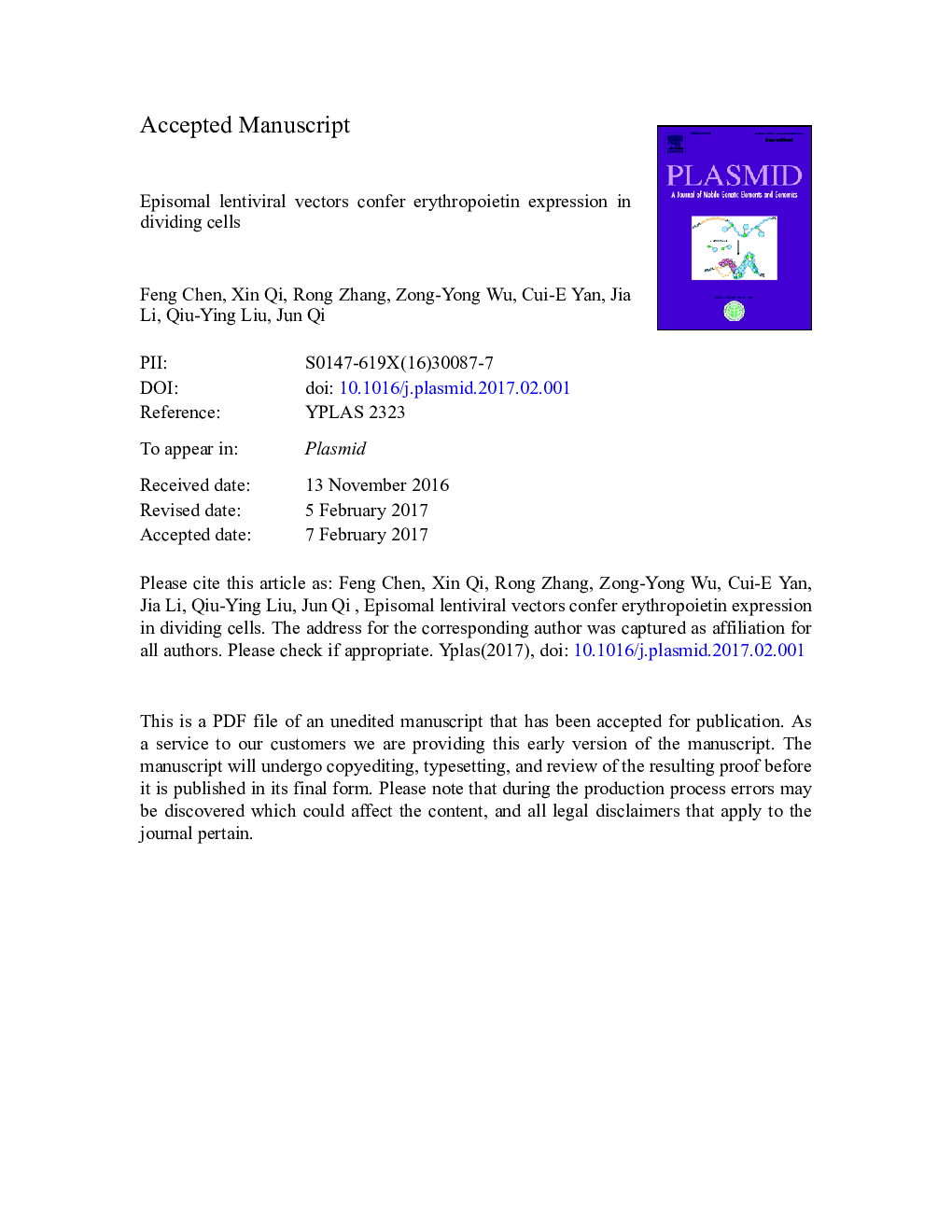| Article ID | Journal | Published Year | Pages | File Type |
|---|---|---|---|---|
| 5591009 | Plasmid | 2017 | 18 Pages |
Abstract
Lentiviral vectors are now widely considered as one of the most common gene delivery tools for dividing and non-dividing cells. However, insertional mutagenesis has been found in clinical trials with retroviral vectors, which poses a safety risk. The use of non-integrating lentiviral (NIL) vectors, which avoid integration, eliminates the insertional mutagenesis problem. These NIL vectors are unable to mediate stable gene delivery into dividing cells, which makes them of limited use in the clinical practice of gene therapy. In this study, we constructed a NIL vector which harbors the scaffold/matrix attachment region (S/MAR) sequence and a therapeutic gene. NIL retained episomal erythropoietin (EPO) gene expression for 74Â days in dividing cells both with and without selection. Furthermore, Southern blot analysis showed that the NIL vector was retained extrachromosomally in CHO cells. In conclusion, the NIL vector based on an S/MAR sequence retained the extrachromosomal expression of a therapeutic gene in dividing cells. Our results show that NIL vectors maybe a safe and effective means of gene delivery, which is of potential clinical significance.
Keywords
Related Topics
Life Sciences
Biochemistry, Genetics and Molecular Biology
Genetics
Authors
Feng Chen, Xin Qi, Rong Zhang, Zong-Yong Wu, Cui-E Yan, Jia Li, Qiu-Ying Liu, Jun Qi,
